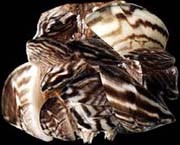|
The Great Lakes Restoration Initiative (GLRI) has produced a series of short, but very informative, videos on four invasive species: LITTLE THINGS big problems. Take a look.
Invasive Plants In Our Parks
Invasive non-native species are plants and animals that are native to other regions of the world and have the ability to flourish and replace native species. Many came in grain shipments, ships, crates, ship ballast water, or the personal belongings of people as the U.S. was settled. Many others have been intentionally introduced by flower gardeners, seed & plant companies, bird lovers, pet owners, and as stow-a-ways on food producing trees and seed. A number of these non-native species are very aggressive and do not have any natural predators or diseases here in North America. They also developed in countries with a long history of grazing or human use and most have aggressive behavioral, growth, or reproductive habits. The plants often have spreading root systems or produce seed crops in the tens of thousands. And the end is not in sight! Just go to any garden magazine and you will find a whole host of flowers and plants from other countries that are noted for their 'hardiness', 'ability to grow anywhere,' 'deep spreading roots,' or 'huge' seed crops. The following are examples of the more "successful" of these species within the Lakeshore which are immediate threats to the native habitats. 
Aquatic Invaders - The Welland Ship Canal was constructed for ship passage around Niagara Falls. The sea lamprey soon followed the big ships coming into Lake Michigan and devastated the native lake trout. Next came the alewife, also from the Atlantic and with the lack of adequate predators, it soon increased to more than 50% of the fish biomass of Lake Michigan. Zebra and quagga mussels came in the water ballast of freight ships loading in European harbors and dumping in the Great Lakes. These mussels are choking off pipes and inlets, and coating rocks, boat hulls, and pilings throughout the Great Lakes. They are devastating the native freshwater clams populations both through competition and attaching to them while also accumulating toxins and heavy metal that end up in the food chain and impact fish-eating birds and predatory fish. It is also becoming apparent that they play a role in the formation of the large, green mats of Cladophora algae, found with increasing regularity on the Lake Michigan beaches. Ruffe and round goby are recent fish invaders who are just getting a foothold and may have great impacts on the Great Lakes fishery. Spiney water fleas have invaded Lake Michigan in the ballast tanks of foreign freighters and impact the zooplankton on which native fish depend. They also attach to fishing lines and will mess up many a reel in the future. Invasive aquatic plants such as Eurasian watermilfoil, with the ability to completely choke off the shallow areas of small lakes, inlets, and rivers is working its way north on unsuspecting boat props. Animal Invaders - The situation on shore is as bad. Mute Swans, intentionally introduced from Europe, displace native waterfowl around the lakeshore, including Common Loons and Trumpeter Swans, with very aggressive territorial behaviors. House Sparrows and Starlings continue to displace native birds from nests and habitat as their numbers increase nationwide. Even white-tailed deer, which are native to the mainland, but which were not historically found on the islands in Lake Michigan until their introduction to most of the islands by man. They have had numerous negative impacts to North Manitou Island's vegetation since the late 1920's. A whole host of non-native insect threats to the forest trees are covered under the PEST heading. Plant Invaders - Spotted knapweed has a long history at the Lakeshore. It is filling in the meadows with a lovely pink flower and a plant that excretes a chemical that inhibits all surrounding plant growth, thus helping it to replace grasses, forbs and native trees. Baby's breath, with its huge taproot, escaped from flower gardens and flower bouquets and is invading the dunes and crowding out Pitcher's thistle and other native beach vegetation. Purple loosestrife was a common flower garden plant with its beautiful arrays of pink flowers. It is now threatening wetlands throughout the U.S. and can quickly outcompete the cattails, sedges and rushes used extensively by wildlife for nesting and feeding. Garlic mustard is a relatively new threat that grows in the shade of the densest forest and that crowd out all of the native flowering plants and ferns that create breathtaking scenery along the forest trails. Myrtle is a landscaping ground cover that is also expanding out into the forests and completely replacing the understory vegetation. Blue lyme grass has been planted as a beach sand stabilizer by landowners and is now spreading and replacing the native beachgrass and threatening to vegetate large expanses of Piping Plover critical nesting/rearing habitat. Lombardy poplars, black locust, tree-of-heaven, and scotch pine are tree species that have escaped from homesites and have quickly invaded forest edges and meadows so that native hardwoods and conifers cannot get established. Shrubs such as autumn olive and the bush honeysuckles were planted around homes to attract birds with their fruit and are now creating large, dense patches of shrubs which choke out the native plants. The Lakeshore is preparing an Integrated Pest Management plan that identifies a whole array of actions that can be taken to remove or reduce the individual invasive species. This includes scientifically proven treatments for sea lampreys and the other invasive animals. For plants, it includes the use of hand pulling and digging, mowing and cutting, spraying with herbicides selected for their low impacts to the surrounding native species and water quality, and occasionally, the release of bio-control insects and pathogens that are specific to a certain invasive plant. |
Last updated: May 1, 2015
